
An Epic Adventure on B.C.’s Vancouver Island
On British Columbia’s stormy outer limits lies a verdant coastal oasis, ready to be discovered.
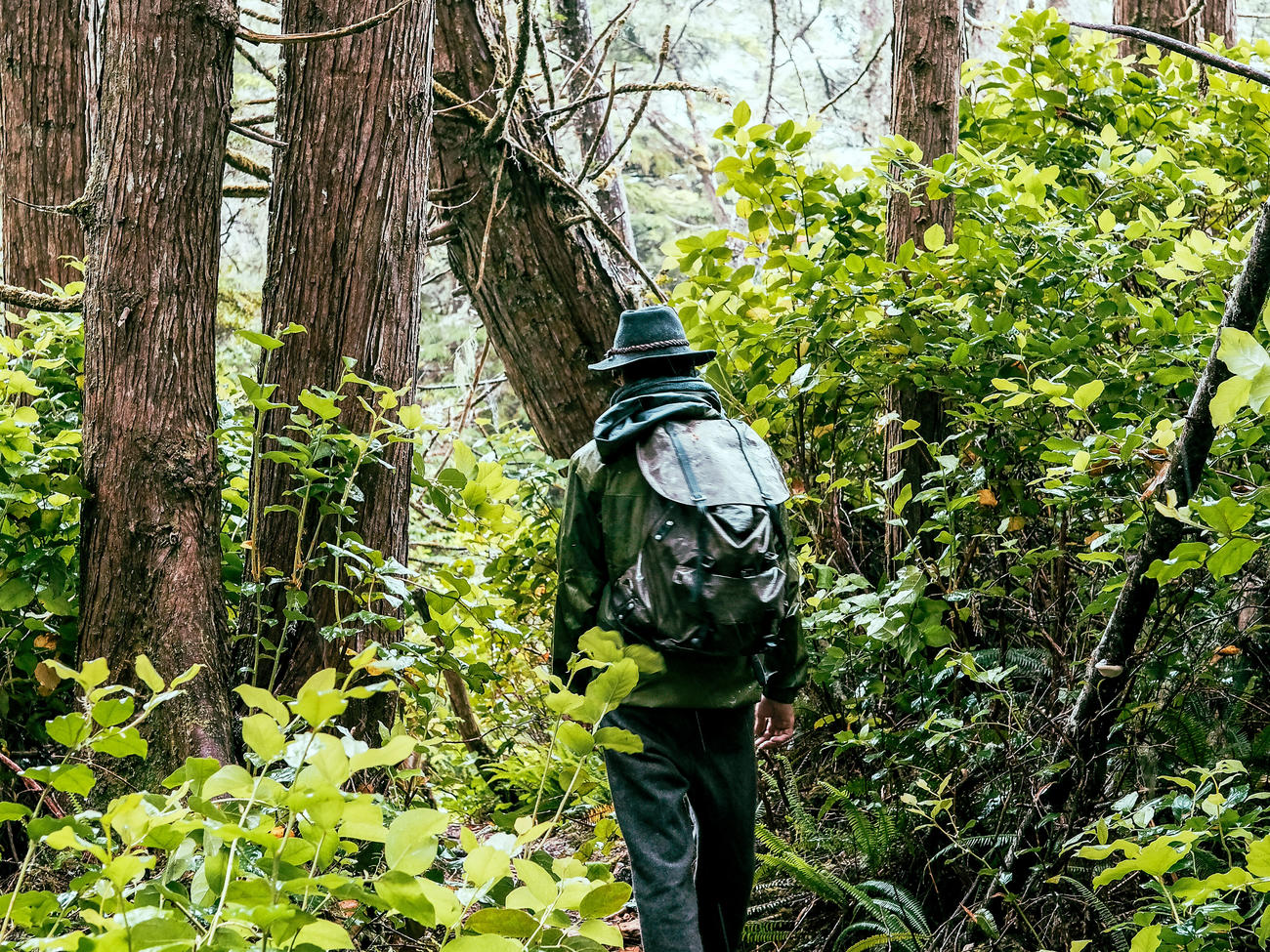
Driving over the mountains from the east coast of Canada’s Vancouver Island, I smack into a violent squall. Seriously, it’s like someone is dropping bucketfuls of gravel on my windshield. As the highway nears the ocean and enters the Pacific Rim National Park Reserve, though, the rain slows to a drizzle. At the sight of a sign that says, simply, “Rain Forest,” I pull over without hesitation and step into one of the only true rain forests in temperate North America.
The hood of my jacket zipped tight, I follow an elevated cedar-plank boardwalk through lime-green ferns and red cedars hung with garlands of moss and lichen. The boardwalk may be practical—designed to protect the fragile forest floor—but it’s also kind of magical, morphing into a staircase that twists up between two massive tree trunks, then dropping down into a murmuring creek basin. Without anyone else around, I breathe deep, drawing in the rich, spicy hint of cedar in the air. It’s instant Zen—save for the low rumble of gas-guzzlers speeding along the nearby highway. But hold on a second. Tuning in more closely, I realize it’s too regular and insistent to be traffic. Nope, it’s actually waves crashing on the beach at least half a mile away—another reminder, if any was needed, that it’s storm season in the North Pacific.
Which is why I’m here. On this remote coast, three meters of rain come down every year, most of it pretty cold water that falls between November and March. Summer, it’s true, is the busy season, when visitors from near and far show up in search of surf breaks, whale-watching tours, fishing charters, beachfront camp-grounds, and posh hotels perched on sea cliffs. But if you’re going to immerse yourself in one of the wettest places in North America, why not go all in and see it at its most waterlogged? So here I am, ready to get soaked.
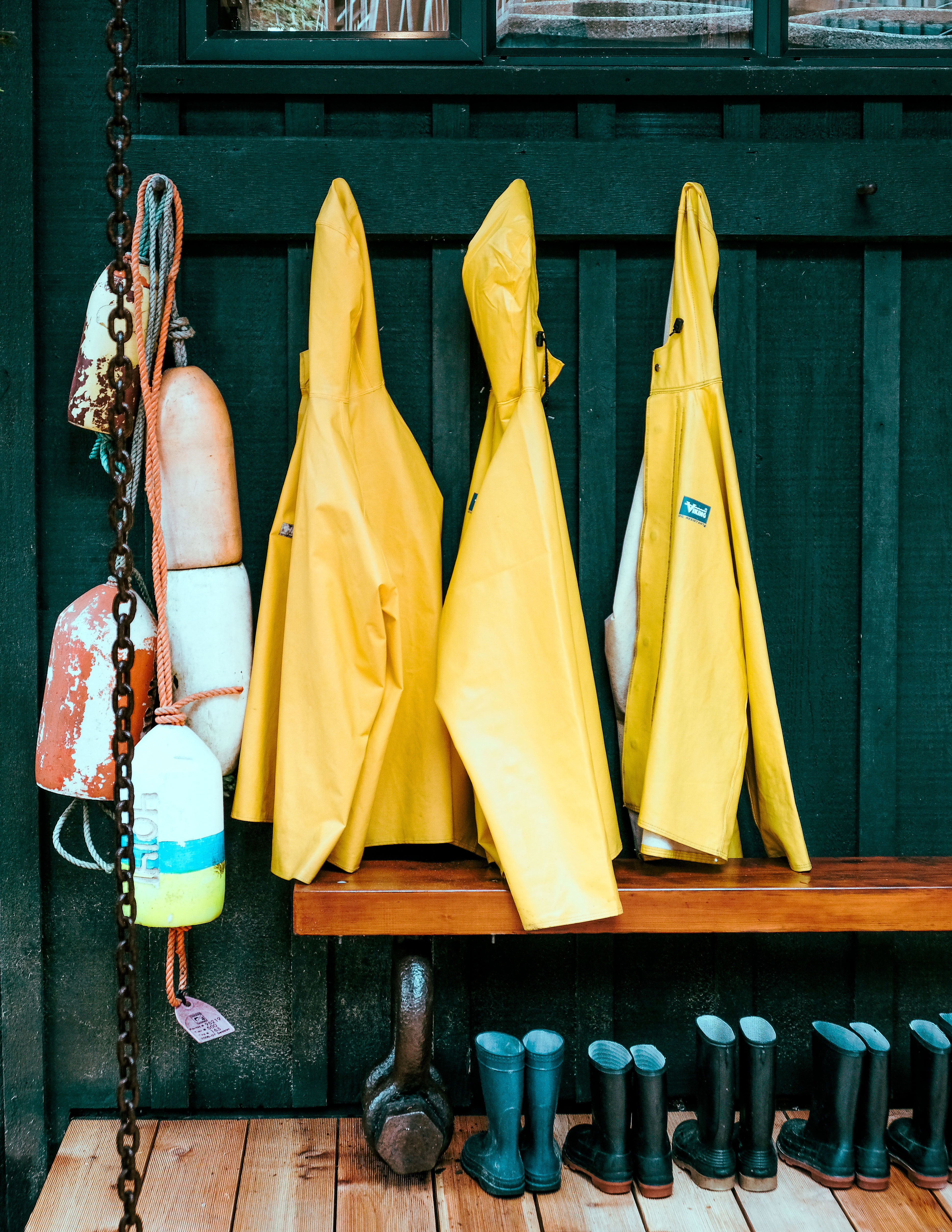
Thomas J. Story
It’s still sprinkling when I reach the town of Tofino, where Highway 4 dead-ends on a peninsula sandwiched between the open ocean and the island-dotted Clayoquot Sound. Flipping through the guest book in my hotel room, it’s clear I’m not the first to come to Tofino in search of wet weather. “Lucked out and got a storm,” says one recent entry. “Woke up this morning to a power outage; there was a terrific storm all night…look forward to another visit,” writes another guest.
While I’d heard that “storm watching” was a not-uncommon pursuit up here, I have to admit I was skeptical, imagining lonely men hunched over in rain ponchos, recording tidal measurements and barometric pressures in soggy notebooks. Maybe that’s because until 1959, isolation was the name of the game in Tofino. The only way to get here was by ship; even now, if you want to go further north, you need to hop on a boat or a single-engine floatplane that buzzes away from the docks. Once the highway opened, though, hippies flocked here in droves. “In the 1960s, every Volkswagen from Manitoba to Vancouver drove to ‘the end of the road,’” says Charles McDiarmid, a trim 61-year-old with preternaturally youthful looks who runs Tofino’s Wickaninnish Inn. We’re standing on a massive old wooden dock down at the harbor, looking toward emerald-green mountains that jut right out of the Clayoquot Sound. The rain’s stopped, and he’s showing me around this town of about 2,000 year-round residents, explaining why people around here actually root for downpours.
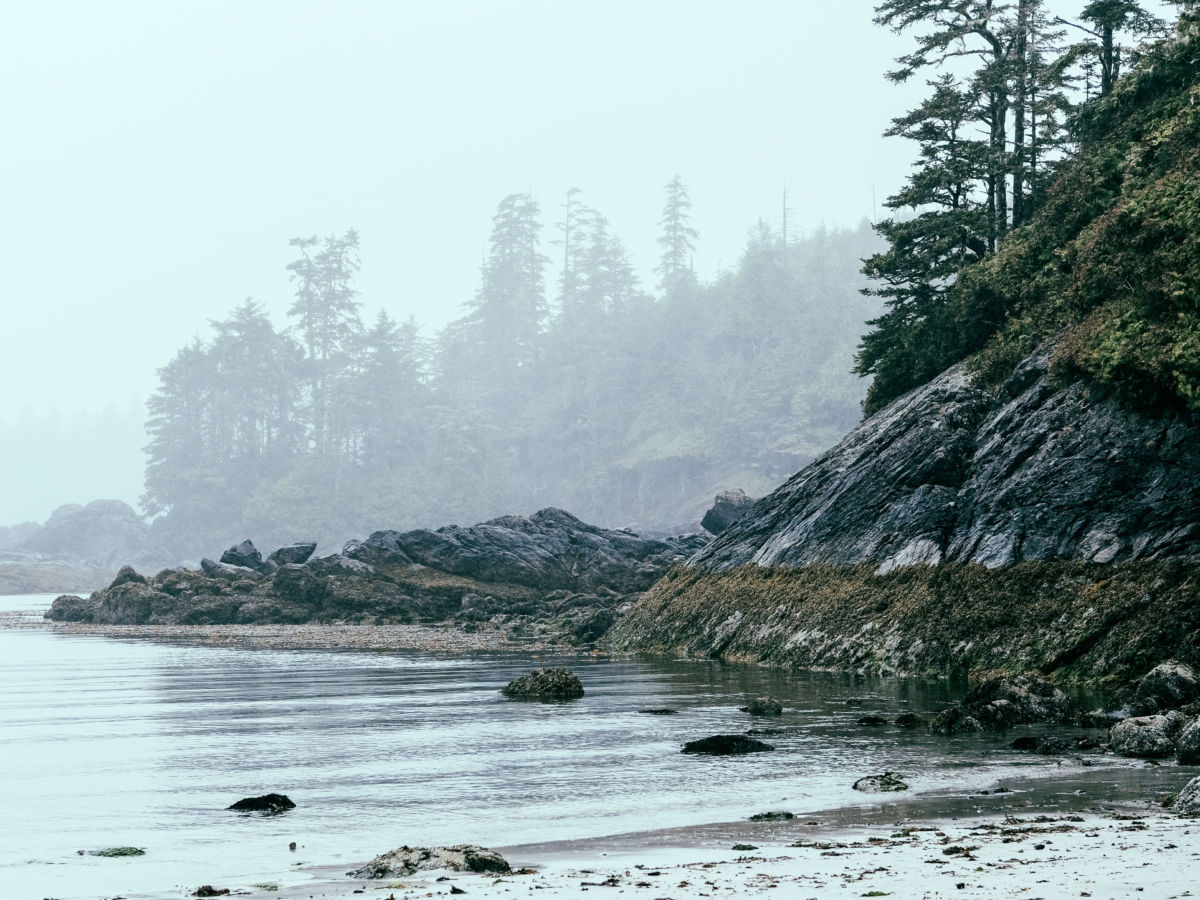
Thomas J. Story
“One of the really great things I remember as a kid only happens when you get a big storm and a big high tide at the same time,” he says. “Right at the peak of high tide, the ocean will come 30 or 40 feet into the forest. The logs that have been sitting on the beach run right into the rocks and become like giant tuning forks. They emit a low sound unlike anything else. You hear it and you think: What the heck is that? It’s these giant logs, just shuddering.”
In 1996, he built a luxury hotel on his family’s land above Chesterman Beach, where the bluff provides an excellent vantage point for spotting tree-sized driftwood thundering in on 30-foot waves. “After, you put on your rubber boots and try to be the first on the beach to see what’s washed ashore,” he says with the enthusiasm of a treasure hunter. “You might find one of those Japanese glass fishing floats, which only survive if they wash onto a sandy beach. The beach is wiped clean, and all new things are there.”
To see it all firsthand, I head 40 miles south at the crack of dawn the following day to Ucluelet, historically a working-class town where loggers and fishermen settled to keep their distance from Tofino’s hippies, activists, and artsy types. It’s also home to a network of hiking paths collectively called the Wild Pacific Trail. At the halfway point of the trail’s Lighthouse Loop, I perch above boiling waves that seethe and foam over black sea rocks (there’s a reason this stretch of ocean was once called “the graveyard of the Pacific”). Below Ucluelet’s boxy little lighthouse are heaps of bull kelp fronds, wrenched from their foundations and left on the rocks at high tide— speaking to even mightier seas.
These swelling waves are mesmerizing. At one moment, a massive wall of water will build and at the last second slosh against the shore, while another more sneaky operator will thunder in and send spray a dozen feet into the air. Honestly, I could do this all morning, with nothing but a clanging buoy in the background and the off-kilter squawks of the gulls to keep me company.

Thomas J. Story
Eventually, curiosity about what’s under all that water gets to me, so I drive downtown to check out one of the world’s first catch-and-release aquariums. The Ucluelet Aquarium is also something of a community effort: Bartenders made the boardwalk that leads through green and purple anemones, pale jellyfish, and multicolored rockfish swimming in pure, untreated seawater pumped in from the harbor. And every winter, the aquarium throws a big party, where locals turn up to nudge starfish and surfperch back into the ocean. From there, Mother Nature takes over, and animals that spurn the relative calm of the town’s inlet are tossed in violent surf that pushes oxygen into the water. This encourages the growth of nutrient-filled algae and makes the intertidal zone rich with life. The powerful winter storms also knock old shellfish off the rocks, creating habitat for the next generation.
For that and many other reasons, says the aquarium’s 33-year-old curator, Laura Griffith-Cochrane, folks around here tend to make a party out of the rain. For example, one year a fierce weather system knocked out power to most of Ucluelet, so she and some friends decamped to Black Rock Oceanfront Resort, which over- looks the coast and is equipped with a generator. “There was really nothing we could do,” says Griffith-Cochrane. “So we all had dark ’n’ stormies and watched the waves smashing against the shore. It felt like half the town was in the bar together.”
In my case, though, the next few days only see the weather “improving.” As the sun begins to shine, I find myself missing the clouds that often hang like billowing fabric, as if posing for some ancient Japanese ink-and-brush landscape. The good news is that when it stops raining, it’s much easier to get out on the water itself.
So I join a few fellow adventurers from Canada and around America for an hour-long boat ride up to Hot Springs Cove, where geothermally heated water flows through a series of pools at the edge of the ocean. Tim, our captain and a member of the Tla-o-qui-aht First Nation, guides us around rocky islets and punches through big ocean swells. Along the way, we spot soaring bald eagles, otters, and sea lions.
Though it’s not raining, I do manage to get plenty wet with salty spray by standing outside the boat cabin, scanning the horizon for whale spouts. Far ahead and just off to the port side, I finally see one. “Two o’clock!” I relay to our captain, who guns the engine and then brings us to a stop in Cow Bay. For the next ten minutes, we watch gray whales—some with bright patches of orange barnacles on their snouts—surface and dive.
Further north, Tim drops us off at a weathered dock, and we follow the boardwalk trail to the hot springs. Soon, we’re sitting in steaming water that smells faintly of burnt matchsticks, a good 30 miles from the nearest road.

Thomas J. Story
That’s where I end up talking with Pat, a 50-something woman from Ontario with a friendly, ruddy face who admits she’s a bit out of place here. “I’m more of a toes in the water, butt in the sand, beer in the hand kind of gal,” she says. “But I came here to see this—and to hug a big tree.” The previous week, a friend had shown her some photos of this same hot spring; the next day, she dug her bathing suit out of the closet and booked the trip, letting her husband and two adult daughters stay back at home. It’s her first trip to B.C., and she’s here to celebrate a pretty big milestone—after being diagnosed with cancer in 2012, she’s just passed her final screening and been declared cancer-free.
I mention a bog forest between Tofino and Ucluelet, a place where the red cedars are ancient but stunted and gnarled—forlorn things that could especially use a good hug. “I’m going to check that out,” she says matter-of-factly.
To escape the heat, I break off from the other bathers and head toward a protected pool of pure ocean water not far from the spring. If the thunderstorms aren’t going to give me the bracing soak I’ve come for, I figure, I’m going to have to do it myself. I inch my way in, then dive forward. But I’m not there for long: One Mississippi, two Mississippi, and I’m back up on the rocks, trying not to howl. Pat’s looking down, bemused, from the ledge above. I make some comment about how there’s nothing like an ice-cold dip to make you feel like you’re really alive, one second before mentally kicking myself. But she just smiles and laughs.
Moving back and forth between rainforest and ocean, I’ve gained an appreciation for how water seems to connect everything around here. It’s been a vague intuition—until, that is, I find myself standing on Meares Island under a red cedar that’s 1,500 years old. Through his wispy beard, my kayak guide, Jesse, proclaims this a grandmother tree. “A tree this big is its own little ecosystem,” he says, pointing to the ferns and even whole hemlocks sprouting from its crooks and branches.
Scientists, he says, are discovering that a surprisingly large portion of the nutrients that feed these forests comes from migrating salmon, which spend most of their lives in the ocean, run up the rivers, breed in rain-swollen forest streams, die, and then are recycled back into the otherwise nutrient-poor soil. (The exact impact is debatable, I find out later, but one 2000 study published in the Canadian Journal of Zoology showed that foraging bears in British Columbia recycle up to 90 percent of the total salmon biomass back into the forest floor.) It’s an idea that makes me love this place even more: The waves may eat away at the coastline, but the ocean also helps build the forest, and the cedar boardwalks really are made (at least partly) of ancient salmon.
Even the food and drink here often draw you back into the surrounding ecosystem. After my paddling trip, I head to Tofino Brewing Company, the lone brewery in the area, where I nurse a salty, umami-rich stout made with local bull kelp—the same stuff I’d been dodging in a kayak just an hour before.
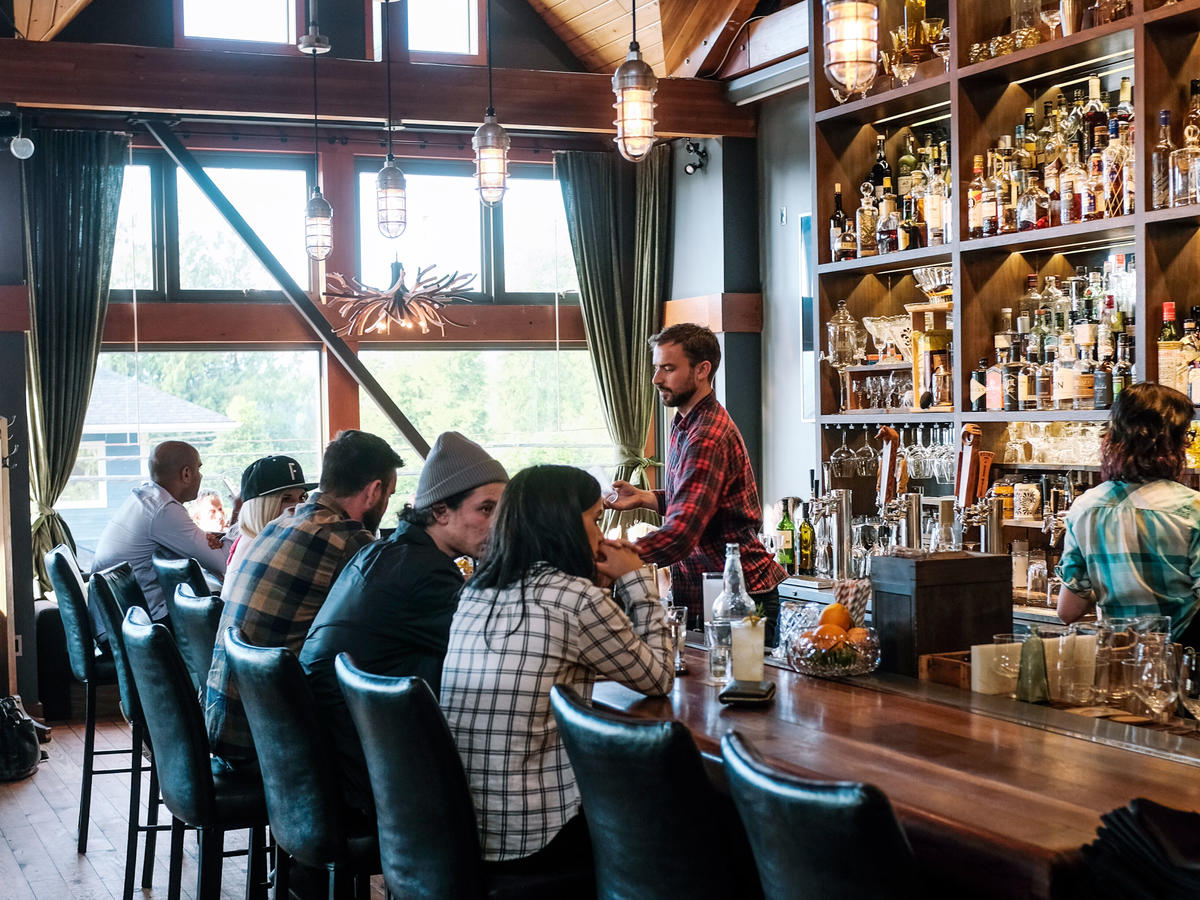
Thomas J. Story
At Wolf in the Fog—a spot that, since it opened in 2014, has regularly shown up on lists of the best restaurants in Canada—the landscape makes its way into the dining room via long, spiraling curls of cedar wood that surround the hanging lights. Casual surfers in mesh-backed hats eat hamburgers, formally dressed retirees share bottles of wine, and locals in sweatshirts talk earnestly about salmon spawning patterns.
For a parting nightcap to toast this unforgettable shoreline, I order their Cedar Sour. Made using a rye whiskey infused with cedar chips, it takes me right back to my walks in the rainforest, that scent of damp undergrowth mingling with split timber.
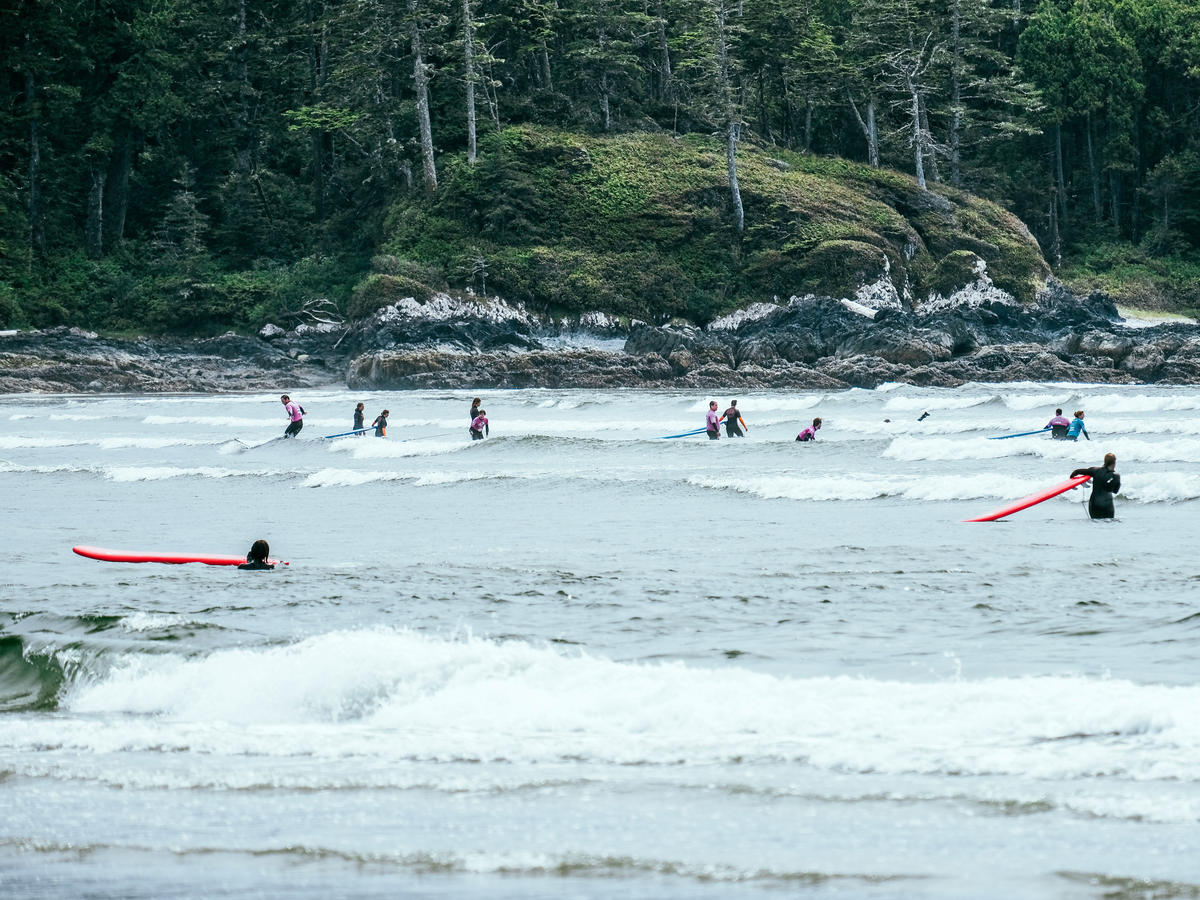
Thomas J. Story
The next morning, before leaving town, I go for a sunrise jog on the beach to work off any latent stout and cedar, and soak in some last molecules of sea spray. The tide’s low, the waves slack for now. I run the whole span of Chesterman Beach, which in the height of summer is one of Canada’s hottest surf breaks. But this morning, I have it all to myself—just me, the gulls, and a few bald eagles that eye me skeptically from craggy, lichen-bearded trees.
According to the weather forecast, another big storm is on its way—it’s going to rain all week. And I can’t help feeling like I’ll be missing out.
Getting Here
Many major airlines serve Victoria, Vancouver Island’s largest city; from there, it’s a four-plus-hour drive to Tofino. Or, fly into Vancouver, head north to Horseshoe Bay, hop on the ferry to Nanaimo, and drive over to the western side of Vancouver Island on Highway 4.
Stay: To Tofino and Beyond
Give yourself just three days and you can cover quite a bit of ground here, from top-notch restaurants to gentle forest walks to sparsely inhabited islands only accessible by watercraft.
DAY 1
7 A.M. Wake up at the four-room The Francis Boutique Inn (thefrancis.ca) in downtown Ucluelet.
8 A.M. Head south to Coast Guard Road and hike the 1.6-mile Lighthouse Loop of the Wild Pacific Trail (wildpacifictrail.com).
11 A.M. The Ucluelet Aquarium (uclueletaquarium.org) is the place to get up close with North Pacific sea creatures.
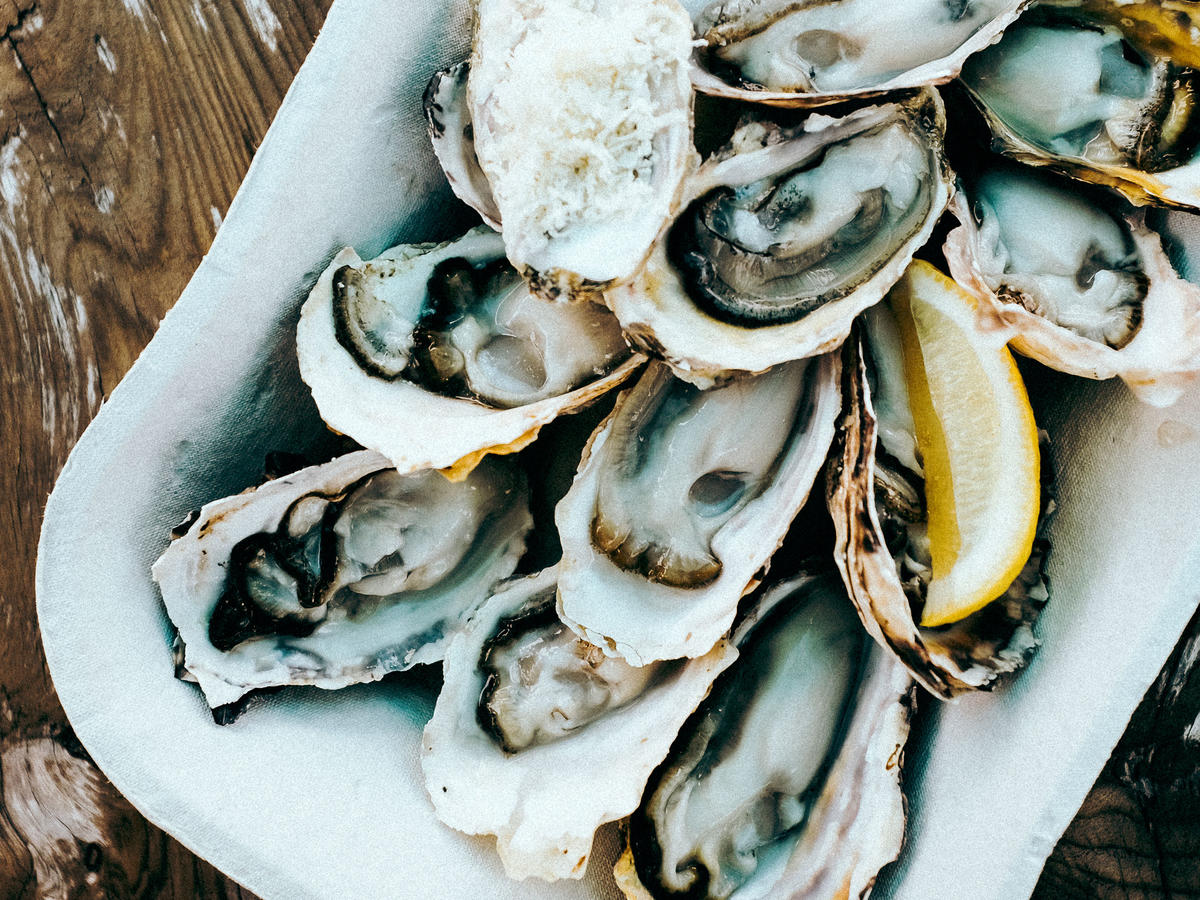
Thomas J. Story
1 P.M. It’s all about oysters at the Ravenlady (ravenlady.ca) food truck; get them smoked, fried, and steamed in the Oyster Trio.
2 P.M. On your drive north to Tofino, stop at Pacific Rim National Park Reserve (parkscanada.gc.ca). The Schooner Cove trail winds through the rain forest, then dumps you out on a magnificent beach.
5 P.M. Check into Ocean Village (oceanvillageresort.com) or the Wickaninnish Inn (wickinn.com). The inn’s ocean views, stunning shorefront dining room, and luxurious spa make it Tofino’s ultimate hotel stay.

Thomas J. Story
6 P.M. A laid-back gem, SoBo (sobo.ca) hits the spot with fresh seafood and a hearty smoked salmon chowder.
DAY 2
8:30 A.M. A spruce-infused oil massage at the Ancient Cedars Spa (wickinn.com) will make you feel like you’re melting into the forest.
10 A.M. Fuel up like many a Chesterman Beach surfer with a rich cappuccino and a flaky breakfast pastry at Tofitian Cafe (tofitian.com).
11 A.M. As soon as the Tacofino (tacofino.com) food truck opens, hop in line and pack a carnitas burrito in your bag for later.
12:30 P.M. Zip over to Tofino Sea Kayaking downtown for a guided paddle to the Big Trees Trail on Meares Island (tofinoseakayaking.com).
4:30 P.M. Grab the keys to a room at Middle Beach Lodge (middlebeach.com) and dry off. A short walk from MacKenzie Beach, it features two big lounges where guests meet and mingle over evening beers and board games.
5:30 P.M. A warming bowl of ramen and some Japanese snacks at Kuma (kumatofino.com) will scare off any lingering ocean chill.
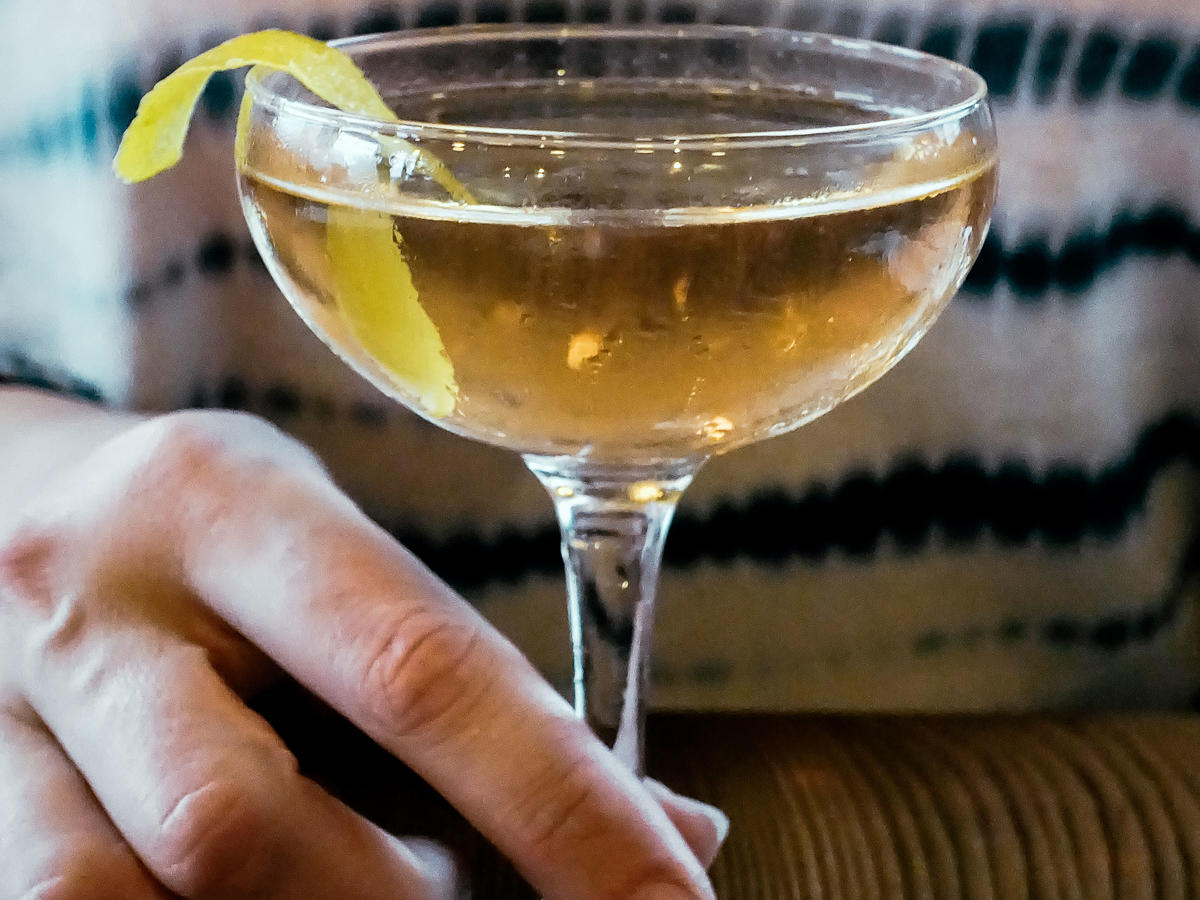
Thomas J. Story
DAY 3
9 A.M. Catch a boat via The Whale Centre (tofinowhalecentre.com) and visit the warm pools at the remote Hot Springs Cove.
2 P.M. Back on shore, step into the Eagle Aerie Gallery (royhenryvickers.com) to see work from Roy Henry Vickers, one of B.C.’s most beloved artists. Then hit up Piña (pinastyles.com), Habit (250/725-2906), and Salt (250/266-0556) for clothing and gifts.
5 P.M. Throw back a refreshing Tuff Session Ale or a flight at Tofino Brewing Company’s (tofinobrewingco.com) no-frills warehouse tasting room.
6:30 P.M. For a final crescendo, devour a Vancouver-Island banquet featuring local fish, foraged mushrooms, and vivid cocktails at Wolf in the Fog (wolfinthefog.com).
